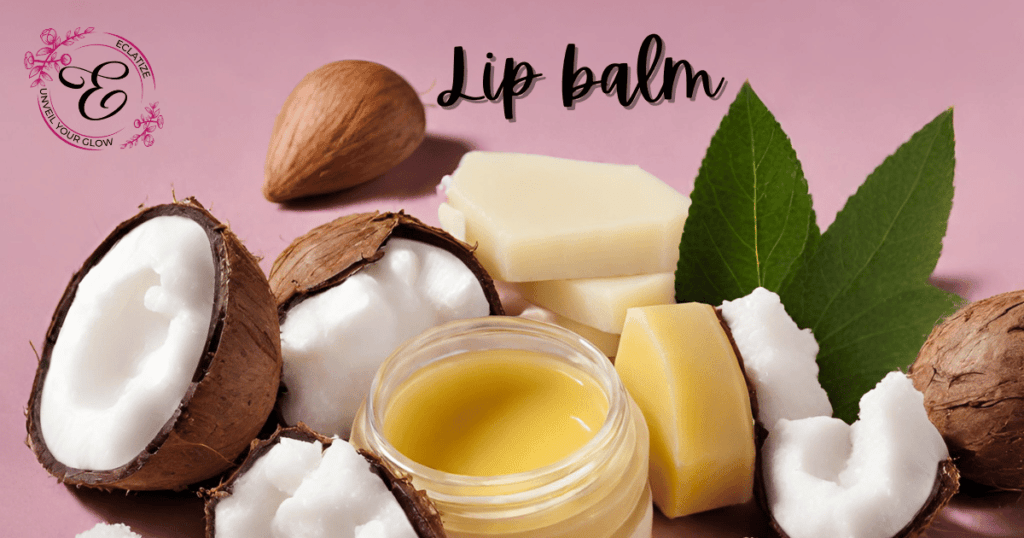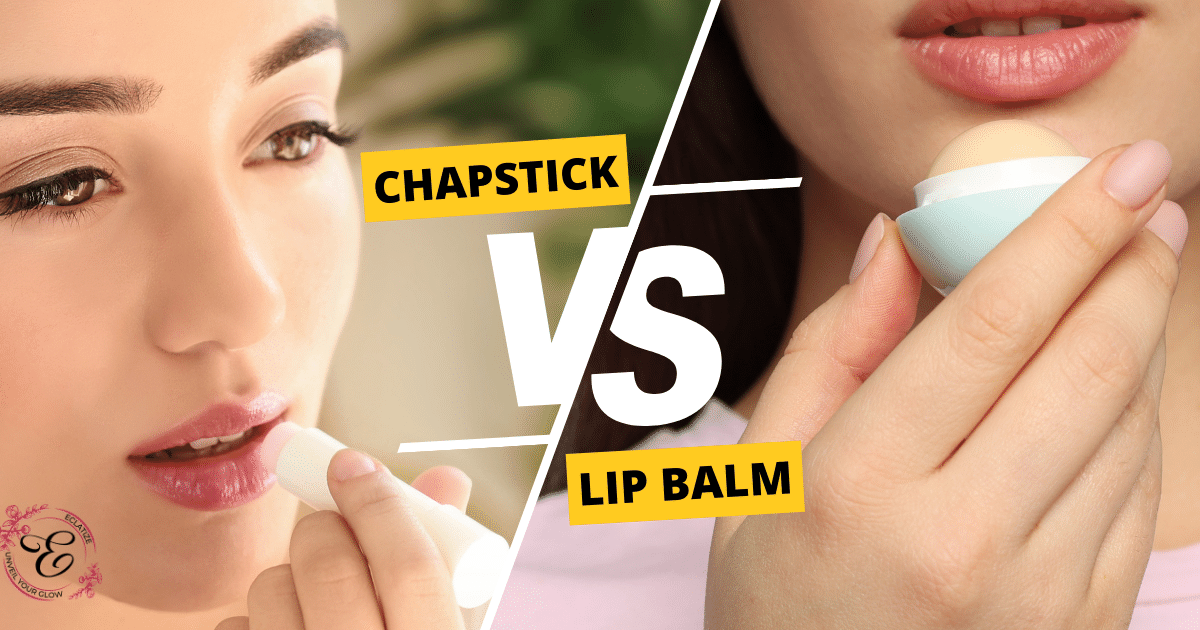Lip balms and chapsticks are two commonly used products for lip care, often interchangeably referred to, yet they possess distinct characteristics that set them apart.
Table of Contents
Lip Balms and Chapsticks
Lip balms and chapsticks have been essential items in the realm of skincare for decades. These products aim to moisturize and protect the delicate skin of the lips from harsh environmental elements like wind, sun, and dry air.
Composition and Ingredients
When discussing the composition and ingredients of lip balms and chapsticks, it’s essential to understand their makeup and what goes into these products.
Lip balms typically include a blend of ingredients like beeswax, shea butter, oils such as coconut or almond oil, and various emollients and humectants. These components work together to provide deep moisturization and protection to the lips, preventing dryness and chapping.

On the other hand, chapsticks often contain petroleum jelly or other synthetic waxes. These ingredients offer a smoother texture, making chapsticks easier to apply quickly while still providing hydration to the lips.
Both lip balms and chapsticks aim to nourish and shield the delicate skin of the lips from environmental stressors, but their specific compositions vary, impacting their effectiveness and how they feel when applied.
Purpose and Benefits
When it comes to the purpose and benefits of lip balms and chapsticks, their primary goal is to keep the lips moisturized and protected.
These products offer nourishment and hydration to the delicate skin of the lips, preventing dryness, cracking, and chapping. By creating a barrier against harsh environmental elements like wind, sun, and dry air, they help maintain the lips’ health and suppleness.
Lip balms and chapsticks serve as excellent daily companions, providing essential moisture and preventing discomfort caused by dry or chapped lips. Their benefits extend to ensuring that the lips remain soft, smooth, and well-cared-for, even in challenging weather conditions.
Distinguishing Features: Lip Balm vs. Chapstick
One significant distinction lies in their texture and consistency.

Lip balms generally have a richer and more emollient texture, often providing deeper hydration to the lips. They tend to contain a blend of natural oils, butters, and waxes that create a thicker protective layer, ideal for intense moisturization.
Chapsticks, on the other hand, typically have a smoother and lighter texture. They usually contain synthetic waxes like petroleum jelly, offering a thinner application that feels lighter on the lips. Chapsticks are great for quick and easy use throughout the day, providing effective hydration without feeling heavy or greasy.
These differences in texture and consistency cater to varying preferences and needs, allowing individuals to choose between a richer, more nourishing option (lip balm) or a lighter, more convenient choice (chapstick) based on their lip care requirements.
Hydration and Moisturization
Lip balms excel in deeply moisturizing lips, making them an excellent choice for individuals with persistently dry or chapped lips. Chapsticks, being lighter, offer effective hydration for daily use.
Branding and Market Dynamics
Various brands offer a wide array of lip care products, each with unique formulations and branding strategies. Some brands emphasize natural ingredients, while others focus on long-lasting effects or specific lip concerns.
Myths and Misconceptions
Certainly! There are common misconceptions surrounding lip balms and chapsticks that often lead to misunderstandings about these products.
One prevalent myth suggests that using lip balms or chapsticks frequently can make the lips dependent on them. However, this isn’t accurate. These products aim to supplement the lips’ natural moisture and don’t create dependency; rather, they provide essential hydration and protection.
Another misconception revolves around the idea that using lip balms or chapsticks can darken the lips. In reality, when applied correctly, these products don’t cause lip darkening. They’re designed to nourish and safeguard the lips, maintaining their natural color and preventing dryness or discoloration.
Dispelling these myths is crucial to ensure people have accurate information about lip care products. Using lip balms and chapsticks appropriately contributes positively to lip health, without any negative effects often associated with these misconceptions.
Application and Usage Tips
Understanding how to apply and use lip balms or chapsticks effectively is essential for reaping their full benefits.
- Even Application: Apply a thin, even layer of the product to cover the entire surface of your lips. This ensures thorough coverage and better protection against dryness.
- Hygiene Matters: Use clean fingers or a dedicated lip applicator to avoid introducing bacteria to the product or your lips.
- Regular Reapplication: Reapply lip balm or chapstick as needed throughout the day, especially in dry or cold conditions, to maintain continuous hydration.
- Before Bed: Apply a generous layer before bedtime to allow the product to work overnight, providing deep moisturization while you sleep.
- Sun Protection: opt for lip balms or chapsticks with SPF to protect your lips from harmful UV rays, especially when spending time outdoors.
- Avoid Overuse: While regular application is beneficial, avoid excessive use as it can create a buildup and reduce the product’s effectiveness.
- Prep Lips Before Makeup: Use lip balm as a base before applying lipstick or lip gloss for smoother application and to prevent drying out your lips from cosmetic products.
Consumer Considerations
Individual preferences, allergies, and sensitivities play a significant role in choosing between lip balms and chapsticks. Those with allergies may prefer natural ingredient-based lip care products.
Expert Opinions and Recommendations
Dermatologists often recommend lip balms with natural ingredients for individuals with sensitive skin. Understanding personal needs helps in selecting the right product.
Budget-Friendly Options
While some brands are high-end, there are equally effective budget-friendly options available, ensuring quality lip care without straining the wallet.
Effects of Seasonal Changes
Different weather conditions affect lip health differently. While lip balms provide intensive care during colder months, chapsticks serve as a lighter option in warmer weather.
DIY Remedies and Homemade Solutions
For those inclined towards natural products, DIY lip care remedies using ingredients like shea butter or beeswax are popular. However, precautions should be taken to ensure safety and hygiene.
Conclusion
In conclusion, both lip balms and chapsticks offer unique benefits catered to various preferences and needs. Understanding the differences in composition, texture, and purpose helps individuals make informed choices for optimal lip care.
” Explore 10 best chapsticks for dry lips through our blogpost.”
” Get complete guide on how to treat allergic reaction to lip balm through our blogpost.”
FAQs
Are lip balms and chapsticks interchangeable?
While they serve similar purposes, their compositions and textures differ, catering to distinct lip care needs.
Can lip balms or chapsticks cause lip darkening?
No, using lip care products appropriately should not cause lip darkening.
What is the recommended frequency for the application of lip balm or chapstick?
Adjust application frequency based on the environmental conditions, particularly in dry or chilly weather.
Do lip balms with SPF protect against sun damage?
Yes, lip balms with SPF protect against harmful UV rays, preventing sun damage.
Are natural ingredient-based lip care products more effective?
Natural ingredients can be beneficial, but efficacy varies based on individual preferences and skin types.

